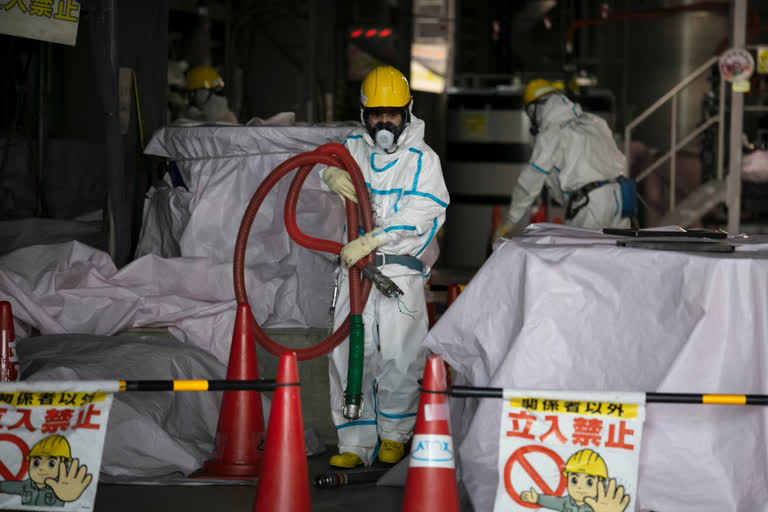Okuma (Japan):Inside a giant decontamination facility at the destroyed Fukushima nuclear power plant, workers in hazmat suits monitor radioactive water pumped from three damaged reactors, making sure it's adequately — though not completely — treated.
Three lines of equipment connected to pipes snaking around in this dimly lit, sprawling facility can process up to 750 tons of contaminated water a day. Four other lines elsewhere in the plant can process more.
From there, the water is pumped to a complex of about 1,000 temporary storage tanks that crowd the plant's grounds, where additional tanks are still being built. Officials say the huge tanks will be completely full by the summer of 2022.
Workers are planning to remove a first batch of melted debris by December 2021. Remote control cranes are dismantling a highly contaminated exhaust tower near Unit 2, the first reactor to get its melted fuel removed. At Unit 3, spent fuel units are being removed from a cooling pool ahead of the removal of melted fuel.
Read:Nuclear watchdog backs release of contaminated Fukushima water
The dilemma over the ever-growing radioactive water is part of the complex aftermath of the magnitude 9.0 earthquake and tsunami that hit on March 11, 2011, destroying key cooling functions at the Fukushima plant. Three reactors melted, releasing massive amounts of radiation and forcing 160,000 residents to evacuate. About 40,000 still haven't returned.
Except for the highly radioactive buildings that house the melted reactors, most above-ground areas of the plant can now be visited while wearing just a surgical mask, cotton gloves, a helmet and a personal dosimeter. The area right outside the plant is largely untouched and radiation levels are often higher.
The underground areas remain a hazardous mess. Radioactive cooling water is leaking from the melted reactors and mixes with groundwater, which must be pumped up to keep it from flowing into the sea and elsewhere. Separately, even more dangerously contaminated water sits in underground areas and leaks continuously into groundwater outside the plant, experts say.
The contaminated water pumped from underground first goes through cesium and strontium removal equipment, after which most is recycled as cooling water for the damaged reactors. The rest is filtered by the main treatment system, known as ALPS, which is designed to remove all 62 radioactive contaminants except for tritium.
But despite repeated official reassurances, there are widespread worries about eating fish that might be affected if the contaminated water is released into the sea.
(AP report)
